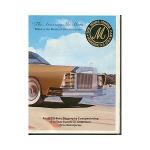|
This section contains 439 words (approx. 2 pages at 300 words per page) |

|
Mohs' hardness scale provides an index and relative measure of mineral hardness (i.e., resistance to abrasion). German geologist Frierich Mohs (1773–1839) devised a scale with specimen minerals that offered comparison of "hardness" qualities that allows the assignment of a Mohs hardness number to a mineral. Mohs' scale utilizes 10 specific representative materials that are arranged numerically from the softest (1) to the hardest (10). The reference minerals are (1) talc, (2) gypsum, (3) calcite, (4) fluorite, (5) apatite, (6) orthoclase feldspar, (7) quartz, (8) topaz, (9) corundum, and (10) diamond.
The softest mineral, talc, can be used in body powder. The hardest, diamond, is used in drill bits to cut through the most dense crustal materials. Mohs' scale is a relative index scale, meaning that a determination of Mohs'hardness number for a mineral is based upon scratch tests. For example, gypsum (Mohs' hardness number 2) will scratch talc (Mohs' hardness number 1). Talc, however, will not scratch gypsum. Glass...
|
This section contains 439 words (approx. 2 pages at 300 words per page) |

|


